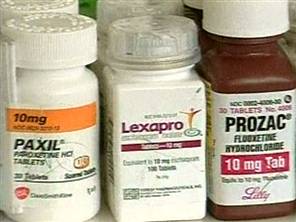
© NA
Tens of millions of innocent, unsuspecting Americans, who are mired deeply in the mental "health" system, have actually been made crazy by the use of or the withdrawal from commonly-prescribed, brain-altering, brain-disabling, indeed brain-damaging psychiatric drugs that have been, for many decades, cavalierly handed out like candy -- often in untested and therefore unapproved combinations of drugs -- to trusting and unaware patients by equally unaware but well-intentioned physicians who have been under the mesmerizing influence of slick and obscenely profitable psychopharmaceutical drug companies, a.k.a. BigPharma.
That is the conclusion of two books by investigative journalist and health science writer Robert Whitaker. His first book, entitled
Mad in America: Bad Science, Bad Medicine and the Enduring Mistreatment of the Mentally Ill noted that there has been a 600 percent increase (since Thorazine was introduced in the US in the mid-1950s) in the total and permanent disabilities of millions of psychiatric drug-takers. This uniquely First World mental ill health epidemic has resulted in the life-long taxpayer-supported disabilities of rapidly increasing numbers of psychiatric patients who are now unable to be happy, productive, taxpaying members of society.
Whitaker has done a powerful, albeit unwelcome job of presenting previously hidden, but very convincing evidence to support his thesis, that it is the drugs and not the diagnosis that is causing the epidemic of mental illness disability. Many open-minded physicians and many aware psychiatric patients are now motivated to be wary of any and all synthetic chemicals that can cross the blood/brain barrier because all of them are capable of altering the brain in ways totally unknown to medical science, especially when the patients are taking the drugs long-term. .

Comment: For more information on Wheat and Gluten intolerance, read the following articles on SoTT:
The Dark Side of Wheat - New Perspectives on Celiac Disease and Wheat Intolerance
Opening Pandora's Bread Box: The Critical Role of Wheat Lectin in Human Disease
Gluten: What You Don't Know Might Kill You